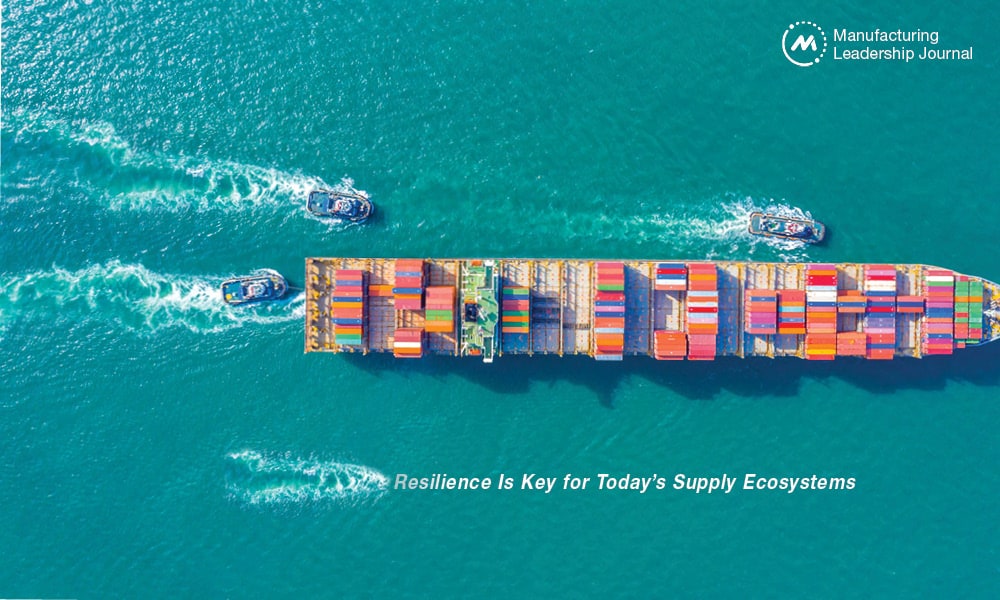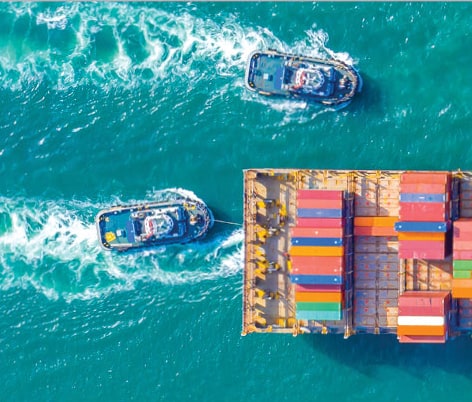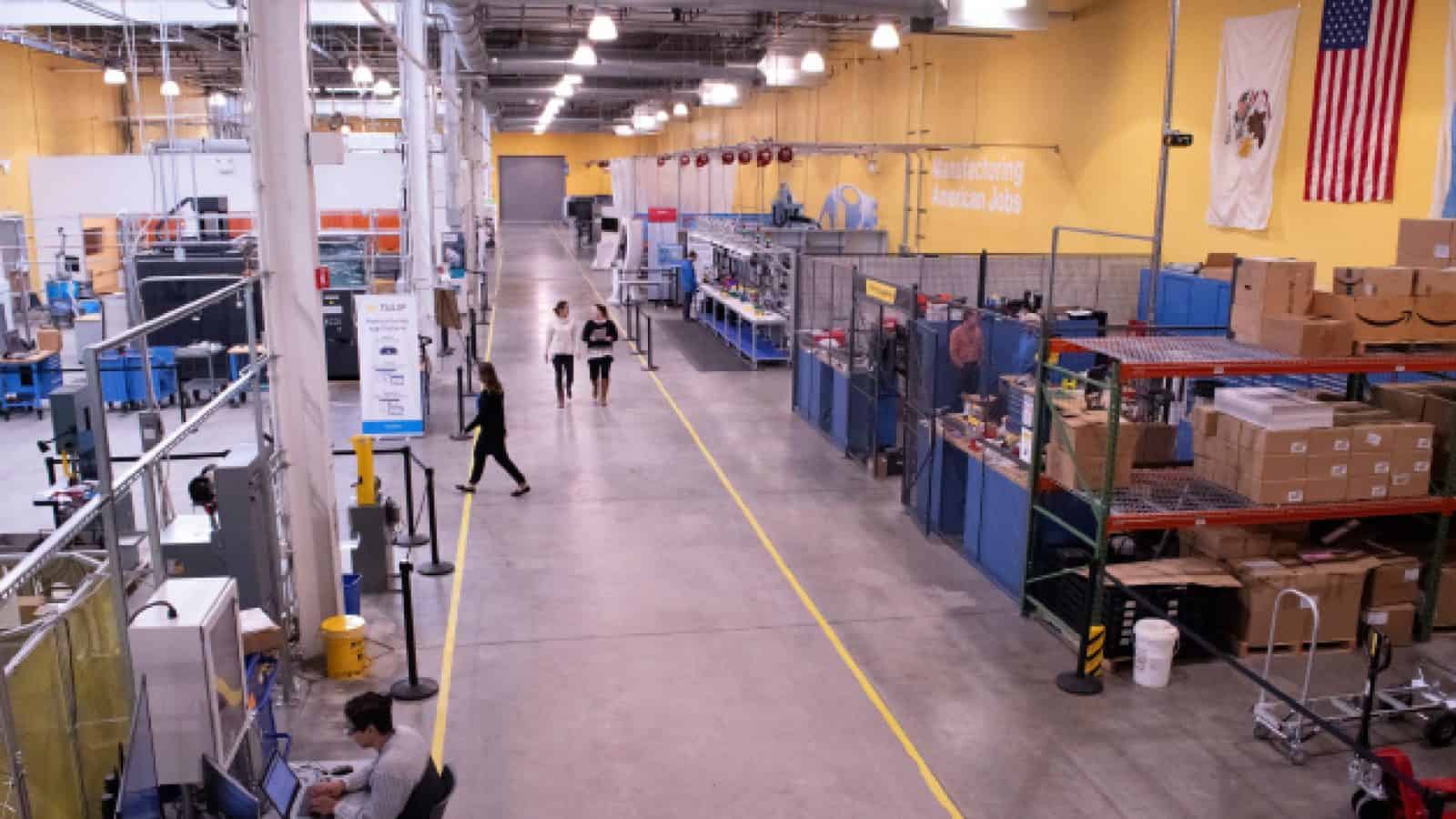Resilience Is Key for Today’s Supply Ecosystems

With disruption and change being the new norm, manufacturers need to ensure their supply networks and ecosystems can adapt to changing needs.

TAKEAWAYS:
● Recent disruptions have highlighted the need for supply networks and ecosystems that can manage the physical movement of goods and the financial side of the supply network.
● Key aspects of a resilient supply chain and ecosystem include redundancy, flexibility, collaboration, information sharing, technology, and data-driven insights.
● It’s important to align with strategic partners that can provide real-time end-to-end visibility, enhanced communication, data-driven decision making, automation and efficiency, traceability within the supply chain, and collaborative Innovation.
In an increasingly interconnected and globalised world, the importance of resilient supply networks and ecosystems cannot be overstated. Supply networks encompass the complex web of suppliers, manufacturers, distributors, and customers that facilitate the flow of goods and services. Meanwhile, ecosystems represent the interdependent relationships and interactions between organisations, industries, governments, and communities. By cultivating resilience within these networks and ecosystems, businesses can better withstand disruptions, adapt to changing circumstances, and ultimately thrive in today’s dynamic and uncertain landscape.
In recent years, there has been a growing awareness of the vulnerabilities present in traditional supply chains, emphasizing the necessity for adopting a more resilient approach. The risks linked to dependence on single-source suppliers, restricted transportation routes, and fragile coordination mechanisms have been underscored by events such as the COVID-19 pandemic, natural disasters, trade disputes, and geopolitical tensions. As a result, both businesses and policymakers are increasingly acknowledging the pressing requirement for resilient supply networks and ecosystems that can both manage the physical movement of goods and the financial side of the supply network. For example:
- More than 80% of the global merchandise trade is transported over sea,1 making it difficult and complex to coordinate between organisations, suppliers, and customers.
- Over the past three years, average container shipping costs have fluctuated from around $2,000 in February 2020, to above $20,000 in September 2021, to now back down to around $2,000.2 This fluctuation makes it complex to make important financial decisions.
Elements of a Resilient Ecosystem
To develop a resilient supply network and ecosystem, organisations need to implement multiple strategies, including:
- Redundancy and Flexibility: Building redundancy by diversifying suppliers, manufacturing locations, and distribution channels can help mitigate the risk of disruptions. By maintaining flexible production capabilities and adaptable logistics systems, businesses can quickly adjust to changing circumstances and minimize downtime.
- Collaboration and Information Sharing: Open lines of communication and collaboration between all stakeholders within the supply network and ecosystem are essential for effective risk assessment, contingency planning, and problem-solving. Sharing information on potential risks, inventory levels, shipment delays, and production issues enables proactive decision-making and faster response times.
- Technology and Data-Driven Insights: Leveraging advanced technologies, such as artificial intelligence (AI), blockchain, and Internet of Things (IoT), can enhance supply network visibility, traceability, and efficiency. The utilization of real-time data collection and analytics empowers proactive risk management, predictive maintenance, and issue resolution, thereby optimizing operations throughout the entire network.

“Building redundancy by diversifying suppliers, manufacturing locations, and distribution channels can help mitigate the risk of disruptions.”
By incorporating redundancy, flexibility, collaboration, information sharing, technology, and data-driven insights, organizations can experience multiple benefits, including:
- Risk Mitigation: Resilient networks can anticipate and withstand disruptions, reducing the financial and reputational costs associated with supply chain disruptions. By proactively identifying vulnerabilities and implementing mitigation strategies, businesses can safeguard their operations and maintain customer satisfaction.
- Adaptability and Innovation: Resilient networks encourage agility and foster a culture of innovation. The ability to quickly adapt to market changes, emerging technologies, and customer demands provides a competitive advantage. Moreover, collaboration within ecosystems often sparks cross-industry innovation and the development of new business models.
- Long-term Sustainability: Resilient networks support sustainable growth by promoting responsible sourcing, ethical practices, and environmental stewardship. By embracing circular economy principles and reducing waste, organizations can contribute to the well-being of communities and minimize their environmental footprint.
Implementing a Resilient Ecosystem
Investing in resiliency is not only a strategic imperative, but also a responsibility to stakeholders and broader society. Organisations that prioritize resiliency will be better positioned to thrive in the face of uncertainty and forge a path towards a more profitable and sustainable future. By leveraging digital technologies and establishing a network that connects all partners involved, organizations can enhance collaboration, communication, and information sharing, leading to increased agility and resiliency.
So how does an organisation implement a resilient supply network and ecosystem? Organizations need to seek out strategic partners who possess a wide range of digital capabilities and can enable:
- Real-Time End-to-End Visibility: [BN1] [SF2] Visibility across the supply chain provides internal stakeholders with a comprehensive view of inventory levels, production processes, and logistics. This visibility helps identify bottlenecks, anticipate disruptions, and make informed decisions in real time.
- Enhanced Communication: Seamless communication and information exchange among all participants within the ecosystem is essential to a resilient supply network and ecosystem. This enables quick response times, efficient issue resolution, and collaborative decision-making, even across geographically dispersed teams.
- Data-Driven Decision Making: Digitisation enables the collection, analysis, and utilization of vast amounts of data from various sources. Advanced analytics and machine-learning algorithms help identify patterns, trends, and potential risks, enabling proactive decision-making to mitigate disruptions and optimize operations.
- Automation and Efficiency: Automation can help replace manual and repetitive tasks, streamlining operations and reducing errors, to increase efficiency. Robotic process automation (RPA), IoT devices, and AI technologies can enhance operational efficiency, allowing organizations to respond quickly to changing demands.
- Traceability within the Supply Chain: Digital technologies, such as blockchain, enable end-to-end traceability and transparency within the supply chain. This helps ensure product authenticity, reduce counterfeiting, and improve adherence to regulations and ethical standards.
- Collaborative Innovation: Large digital networks and ecosystems foster collaboration and innovation by connecting partners, suppliers, and customers. This enables the sharing of ideas, best practices, and insights, leading to the development of new products, services, and business models.
Overall, a resilient supply network and ecosystem is no longer a nice-to-have in today’s business environment; it is a must-have. While implementation may present challenges, the benefits, both in the short and long term, surpass the obstacles, particularly when supported by a strategic partner possessing diverse digital capabilities. M
About the author:

James Bailey, Director, Infor Nexus™. He has spent 20+ years travelling the world, working with brand owners, factories and LSPs to help them work better together, improve processes to ensure all parties are working towards the same end goal.
References
1. Why ports matter for the global economy, World Bank Blogs
2. Global shipping costs are returning to pre-pandemic levels, The Economist
